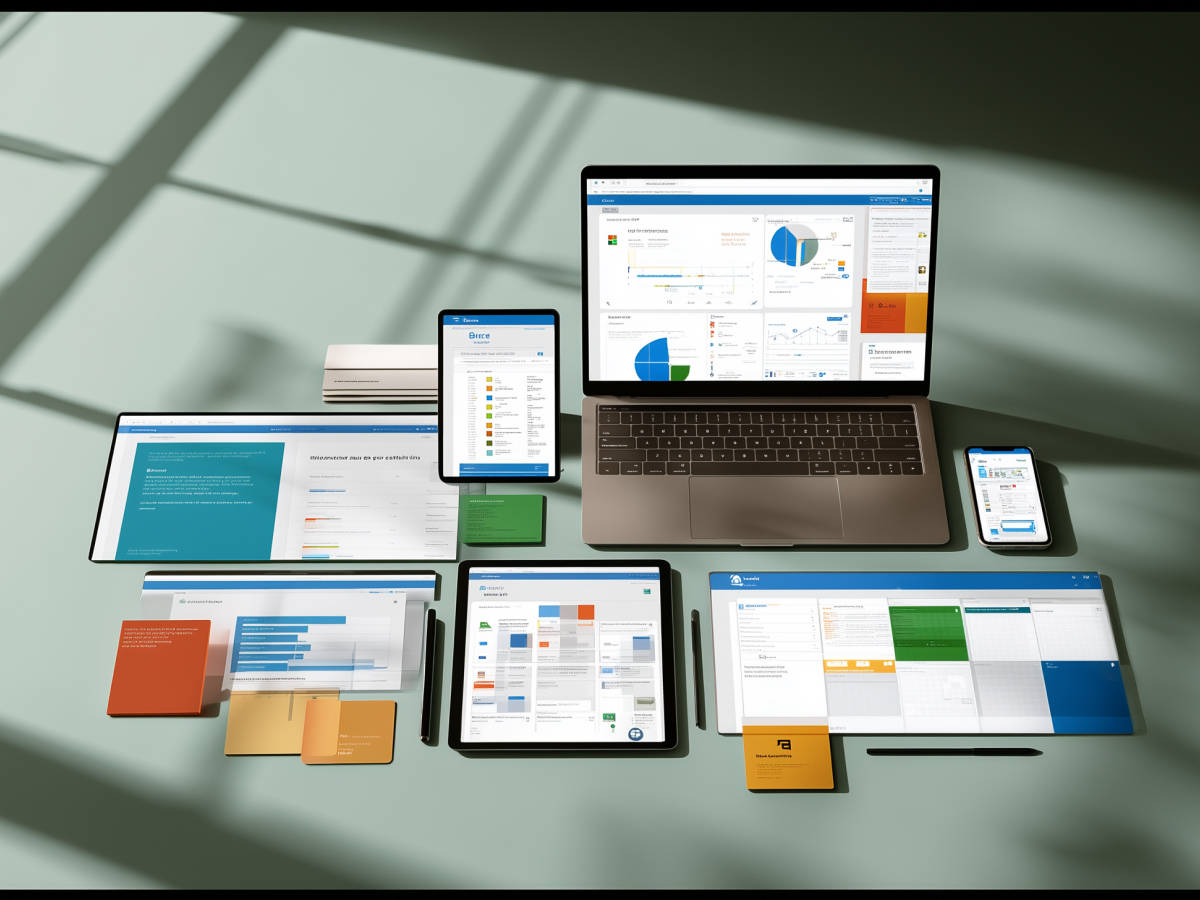AI transforms email into an intelligent, personalized assistant
The email inbox is overdue for reinvention. In the near future, AI will turn it from a passive list of messages into an active, intelligent unit, one that recognizes your patterns and works in real time. As you browse a product online, your AI-enabled inbox will remember it. The next morning, while you’re checking your calendar or asking what’s on your schedule, an email regarding that product surfaces at just the right moment. It’s not guessing, it’s prioritizing based on your behavior, digital activity, and context.
Email will no longer be where you hunt for messages. It becomes a system that works for you. You’ll tell your assistant to send a message, confirm a meeting, or summarize inbox activity, and it happens, proactively. The change is foundational. The inbox becomes a personal operating system, not a pull-fed document repository.
If you’re running a business, you need to understand what this means. It’s a smarter communication layer that knows your customer. It reads patterns, reads context, and surfaces what matters, and suppresses what doesn’t. Leading platforms like Gmail already use behavioral graphs to power categorization and prioritization. The framework is in place. Your task is to make sure your brand’s communication is aligned with this coming reality. Relevant, timely, human.
When this model scales, being in the right place at the right time won’t be about winning the inbox war. It’ll be about being useful in a system driven by signals, not just clicks.
Human-like interaction increases AI responsiveness and engagement
If you want better output from large language models or AI agents, you can’t treat them like vending machines. You don’t input a command and wait for magic. Interaction quality changes results. When you write prompts with human tone, stating purpose clearly, offering structure, even using manners, the outcomes are better. Marketers, engineers, and planners are catching on. The more the conversation feels natural, the better the AI performs.
This is just basic optimization. Dela Quist, a respected voice in marketing, calls this “prompt psychology”, shaping AI interactions with tone and trust to get quality output. Give the model clarity and coherence, and it often returns stronger, more relevant work.
This matters because AI isn’t just a production tool, it’s a key interface for how brands will interact with customers. If you want your brand’s email to be usable in AI-managed inboxes, you have to write for both people and algorithms. The line between the user and the tool is blurring. Optimizing only for human eyes won’t be enough.
Executives need to treat human-AI interaction design as a capability. It directly affects the performance of AI systems across marketing, operations, and planning. That means training people to think about outputs differently. Not “how do I get this done fast,” but “how do I engage AI systems for precise, actionable, scalable results.” It changes everything, from copy to conversion.
Trust is key for the adoption of AI-powered inboxes
The future inbox will handle more decisions than users expect. It won’t just display emails, it will sort, prioritize, and respond to them using machine learning, behavior signals, and contextual analysis. To users, giving that level of control to a system isn’t a small ask. They need to trust that it will treat their information securely and make smart, relevant decisions.
That trust covers more than the AI’s logic. It also includes the companies and brands pushing content into these smarter inboxes. If a user doesn’t trust your intent, or sees your email as noise, that skepticism will be amplified by the AI. The system might suppress or deprioritize your messages. Once that happens, visibility won’t return from better creative or short-term campaigns. It’ll only recover through stronger relationships built over time, driven by consistency and credibility.
For leadership, this highlights two priorities. First, invest in AI transparency. Users should understand, at least at a high level, how the system makes choices and how their data is being used. Second, ensure your brand maintains consistent, reliable communication so AI systems, and your customers, categorize you as trusted. This will not happen automatically. It has to be earned.
Long-term, AI-managed inboxes will be selective environments. Brands that deliver useful, credible content will be surfaced. Others won’t. What you send today impacts where you sit tomorrow.
AI will reshape deliverability and inbox management in marketing
Email marketing success will no longer depend on just open rates or click-through metrics. Those signals still matter, but they’ll be part of a larger system driven by engagement quality and personal relevance. AI inbox agents will decide, in real time, which messages are surfaced and which aren’t. That means weaker content, especially overly promotional or one-directional messages, may never be seen.
For executives, this is a structural change. Your marketing depends on your ability to maintain presence inside the inbox. If an AI system is the gatekeeper, the only reliable path forward is building brand equity and relationship depth. Focus less on frequency, more on value. The inbox space is becoming curated by algorithms that optimize for relevance, habit, and personal context.
You need to build email systems that behave more like functions of a relationship than functions of demand generation. That means mapping customer signals more effectively, drawing clearer intent paths, and creating touchpoints that serve the user, not just the brand. Stronger deliverability will come from stronger interaction, not louder messaging.
Marketers who rely only on promotional campaigns or seasonal pushes will see reduced engagement at scale. Meanwhile, programs that focus on intent-based triggers, useful content, and long-term customer support will gain higher placement in AI-managed inboxes. Stay focused on sustained relevance. That’s what the AI will optimize for, and what users are starting to expect.
AI overhauls consumer expectations of email, challenging traditional formats
Email platforms are moving toward functionality that goes beyond static reading. As AI integrates more deeply, inboxes will begin operating on intent, understanding routines, priorities, and ongoing activities. In this model, an email isn’t just opened. It’s interpreted, connected with data from calendars, browsing history, and even voice interactions, then acted on accordingly.
Interactive features already exist, but they’re not the same thing. AMP for Email allows users to interact within the email environment, but the transformation ahead involves AI allowing interaction, and executing meaningful actions. Confirming appointments, managing tasks, surfacing relevant files, all become part of the inbox experience, not separate workflows.
For C-suite leaders, this shift alters how email strategy should be viewed. It’s about integrating with systems the AI agent has access to, systems that feed context and enable execution. Marketing, customer service, and operations will all need to align with this intelligent ecosystem.
If your brand’s email doesn’t integrate with the user’s workflow, it will be sidelined. The field is transitioning from headline optimization to action facilitation. Design content that supports customer tasks. This is infrastructure work, not design polish. You either fit into how the smart inbox operates, or you don’t.
Gradual AI adoption is necessary for user acceptance
AI functionality in email will roll out in stages. Users tend to resist unfamiliar systems, especially those involving communication. Introducing high-control automation too early will generate pushback, confusion, and lack of use. Instead, successful platforms will start by enabling smaller, assistive features, ones that help users rather than take over. From there, trust develops, and deeper AI interaction becomes viable.
Even features like tabbed inboxes originally faced skepticism. Over time, as users saw benefits, they became widely accepted. The same logic applies to the AI-driven transformation, adoption takes conditioning. People have to experience enough of an improvement to justify accepting change.
For business leaders, this speaks to timing and communication. You don’t need to introduce full AI functionality immediately. You need to optimize your systems in parallel, quietly making sure content is well-tagged, context-aware, and structured in ways AI can assess. Test and iterate before these capabilities go mainstream.
Smaller updates often unlock larger behavioral shifts. If your email content becomes more helpful or personalized, AI adoption will work in your favor without the user even noticing. Avoid friction. Build alignment early. When smart inbox features become standard, your brand should already be functioning on those terms, not waiting to play catch-up.
Strategic foresight in email evolution is a vital leadership trait
Email is about to experience structural change. AI is taking over key parts of how communication is filtered, prioritized, and executed. That requires leaders to operate with a clear view of what’s coming, not just an understanding of the current environment. Strategic foresight separates high-performing organizations from reactive ones. You’re either planning around transformation now, or you’ll be responding under pressure later.
Success in this space doesn’t come from copying what worked last year. It requires confronting uncertainty with informed imagination. Leaders should be following where inbox technology is heading, whether through early feature testing, platform partnerships, or scanning policy decisions by major providers like Google, Apple, and Yahoo. Their changes to how emails are parsed, summarized, and positioned already hint at the future.
Executives who understand this trajectory won’t wait for inbox functions to shift before they adapt. They’ll align team structure, marketing approaches, and data systems to build in adaptability. That includes upgrading internal knowledge on email technologies, exploring integration with AI APIs, and setting clear parameters for content quality and relevance.
Marketing heads, CIOs, and digital leaders should all be looking at email as an interface set to evolve rapidly. Strategy needs to reflect that. Waiting until change is fully visible is waiting too long. Lead the curve, or compete on the wrong terms.
Strong customer relationships will determine email visibility in AI-managed inboxes
AI will decide what users see in their inbox. When algorithms function as gatekeepers, the value of each message is judged in context, based on past engagement, overall brand trust, and perceived usefulness. If your company sends transactional, one-directional messages, those will be filtered to lower tiers. Relationship-driven communication, on the other hand, will be reinforced by signal-based prioritization.
An inbox governed by AI ranks your brand by how well you’ve built recognition and trust. It won’t only weigh subject lines or delivery timing. It’ll consider how much value the user has historically received, how often responses occur, and whether your messaging supports actual needs. Optionality in content formats, personalization, and continuity will become key.
For executive teams, there’s a clear instruction here: invest in relationships. AI systems will elevate meaningful interaction. Brands that engage users intelligently, with adaptive content and clear relevance, will cut through. The others will be filtered out, less by audience decision, more by algorithm judgment.
Marketing must become more human through technology. Every touchpoint increases or decreases your visibility within AI-managed inboxes. The smarter the inbox becomes, the fewer chances there are to make a false move. Brands that understand relationship economics will outperform in this environment. This is where long-term value starts compounding.
The future of email lies in signal-driven design, not just responsive layouts
Email content is no longer being evaluated in isolation. With the emergence of AI-managed inboxes, how messages are processed depends less on visual presentation and more on signals. These signals come from user behavior, historical interaction, device usage, location, and engagement patterns across channels.
Responsive design still matters, but it’s now the baseline. What comes next is signal optimization, structuring emails for relevance, intent alignment, and contextual fit. AI agents will scan, interpret, and rank message utility based on these signals in real time, pushing useful content forward and suppressing the irrelevant or low-value material.
C-suite leaders should realize this shift impacts marketing execution and overall digital readiness. Investing in cross-platform data integration, user interaction mapping, and predictive analytics is critical. This allows your communication strategy to be signal-aware, and therefore algorithm-compatible.
The competitive edge will come from email systems designed to operate inside an intelligent inbox network that ranks utility over promotion. Brands that recognize this early can begin reshaping how they build and deliver content, with consistent feedback loops and clear user focus driving every engagement.
AI’s role in email will accelerate in the next 3–5 years
We’re entering a convergence period where innovation in AI will directly rebuild how email functions. The next three to five years will produce rapid changes, including smarter filtering, real-time prioritization, predictive categorization, auto-summarization, and full task integration, all powered by LLMs and behavioral data systems. These capabilities are already being prototyped and deployed by major platforms.
This development window matters. Email is still one of the highest-value digital channels, and its transformation won’t be minor. AI will become a critical filter between brand and user. Simply staying compliant or creative isn’t enough. Your systems need to mirror intelligence with intelligence, structured formats, contextual triggers, and personalized modular content.
Executives should act now. That means aligning teams with AI development timelines, creating upgrade paths for existing CRM and marketing automation tools, and building scenario strategies around AI-managed delivery impacts. Train your marketing units to think beyond audience targeting and campaign cycles, they need to think in terms of relevance markers, data feedback, and machine-response loops.
Most of the strategic gains in this space won’t come from last-minute reactions. They’ll come from well-timed readiness, being operationally flexible, technically aligned, and strategically ambitious before the shift becomes obvious in the mainstream market. This isn’t long-term forecasting anymore. It’s short-term execution with longer-term stakes.
In conclusion
You’re not preparing for a minor shift. You’re facing a structural overhaul in how digital communication is filtered, prioritized, and executed. AI is developing now, quietly shaping what gets seen and what gets ignored. If your message isn’t relevant, the system will suppress it. If your strategy isn’t built around signal, trust, and relationship, you’ll be outpaced.
Executives need to make decisions with that in mind. Revisit how your teams build, measure, and deliver content. Update assumptions about what drives engagement. Take email off autopilot and start thinking of it as a living system, one influenced by interaction quality, data integrity, and long-term trust.
The inbox is getting smarter. Your strategy should be too.





